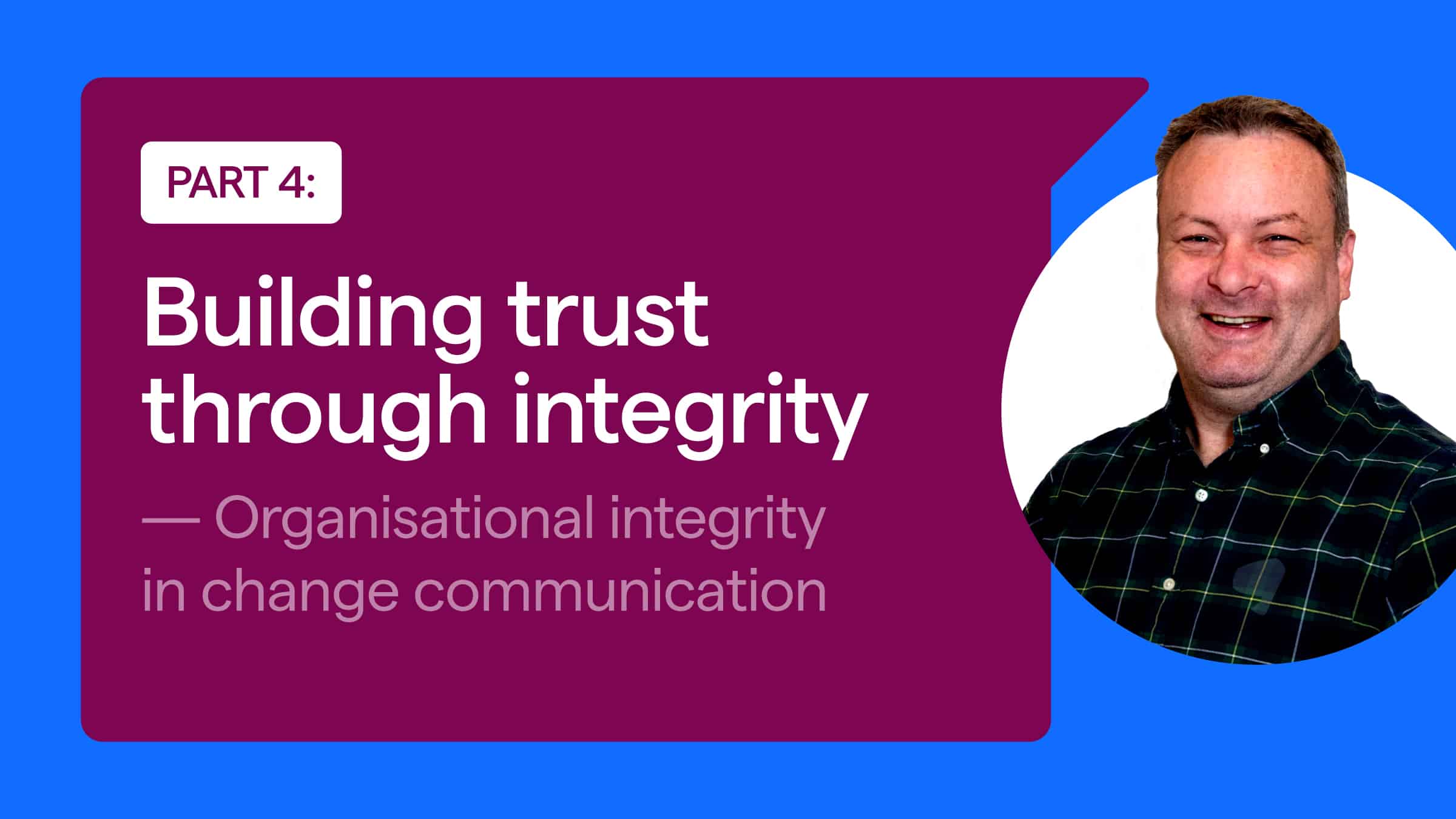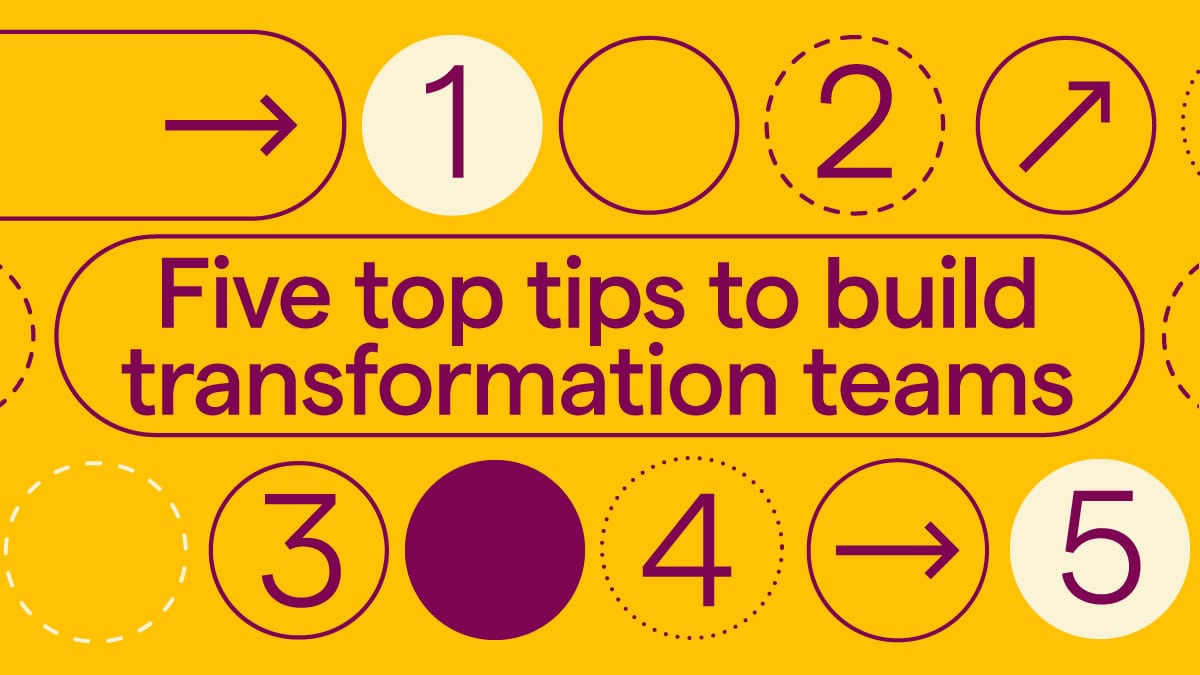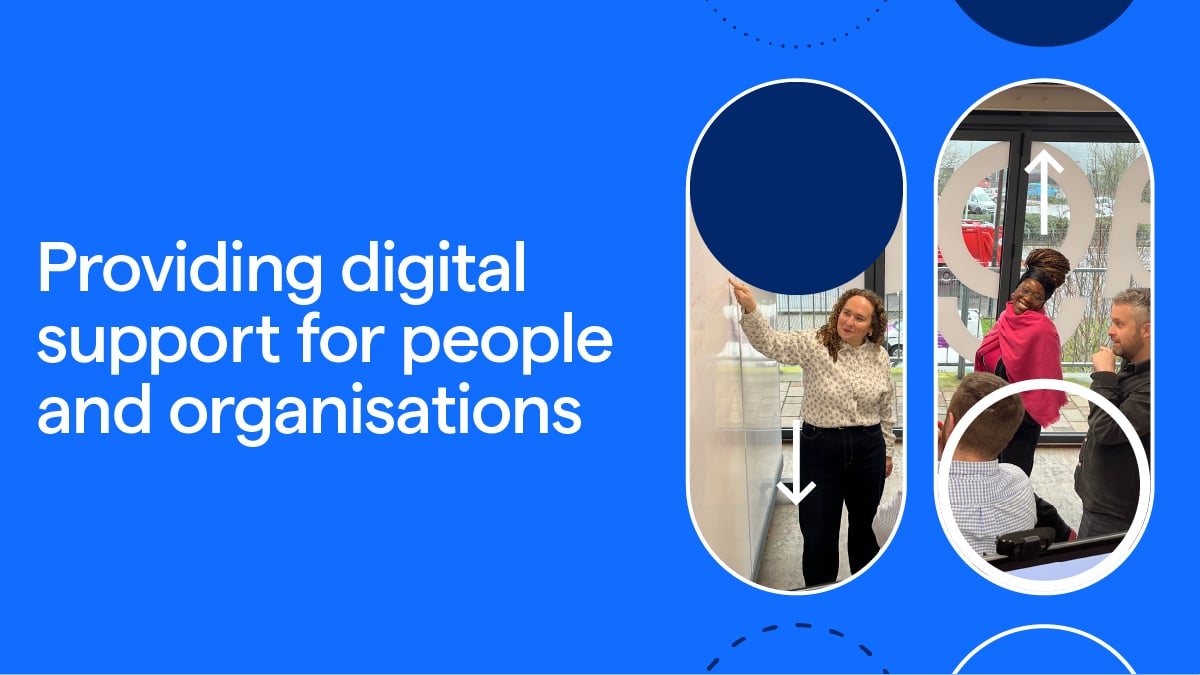Building trust – Organisational integrity in change communication
4 min read Written by: Chris Elias
During this four-part series, we’ve explored the importance of a robust strategic narrative, the power of leaders as communication champions, and the value of incorporating employee voice in your change communication plans. Today, let’s delve into the final pillar of effective change communication: organisational integrity.
What does organisational integrity mean?
As people, we naturally want to please others and say what people want to hear. During any change, it’s important to exercise your values and stay true to what you stand for as an organisation. Do the things you say you’re going to do and make sure that if you can’t, you communicate clearly and early on why that is. This can become difficult in times of change, particularly change that is sensitive or affects people in a way that is uncomfortable or unpleasant.
Why is organisational integrity important?
Maintaining organisational integrity through your change communications will help employees know what to expect. It will help them better prepare, be more active in supporting the change, and gain confidence about how they communicate. It should be a guiding compass to help keep people going in the same direction and hold others accountable to make sure that change is delivered in a way that is considerate to everyone involved.
Here’s why integrity in communication matters:
- Employee morale and confidence: When employees believe the organisation is truthful and reliable, their morale and confidence increase. This translates into a more engaged and productive workforce during change.
- Sense of direction and purpose: Clear and honest communication about the change process, even when roadblocks arise, provides employees with direction and purpose. They understand the “why” behind the change and can better navigate the challenges.
- Accountability and trust: Integrity fosters a culture of accountability and trust. Employees know what to expect, and the organisation delivers on its promises, strengthening the bonds between leadership and employees.
Challenges to maintaining integrity
Let’s be honest: communicating during difficult or unpopular changes can be challenging. Here’s how to maintain integrity even when faced with these hurdles:
- Transparency about blockers: Be upfront about potential setbacks or delays. Explain the situation clearly and honestly, and communicate a plan for moving forward.
- Clear communication when things change: Change is inevitable. If plans need to be adjusted, communicate these changes clearly and promptly. Explain the reasons for the adjustments and reiterate the overall goals.
- Following through on promises: Actions speak louder than words. Always strive to deliver on the commitments you make to your employees. If there are situations where this becomes impossible, communicate openly and explain the reasoning behind it.
What could happen when organisational integrity is overlooked
Imagine a company announces a significant restructuring with promises of increased job security and career advancement opportunities. However, shortly after the restructuring, the company starts implementing redundancies. This lack of transparency and broken promises damages employee trust and creates a climate of negativity.
Maintaining organisational integrity builds trust and creates a foundation for successful change communication. By being honest, transparent, and following through on commitments, you demonstrate respect for your employees and gain their buy-in for the change initiative.
This concludes our four-part series on effective communication during change. By incorporating these key elements – a strong strategic narrative, engaged leadership, a platform for employee voice, and unwavering organisational integrity – you can empower your organisation to navigate change with greater clarity, trust, and, ultimately, success.
If you’d like a chat about or any support on any of what you’ve read, let me know – I’d be happy to share my thoughts.




